NHSScotland Staff Survey 2015 National Report
This National Report provides an overview of the results of the 2015 NHSScotland Staff Survey. The National Staff Survey gives all NHSScotland staff the opportunity to provide feedback on their experience of working for the organisation.
Appendix E: Results by employment & socio‐demographic groups
This section comprises of a series of tables showing the percentage of positive responses received for each question, by employment and socio‐demographic characteristics of the staff in NHSScotland. Groups include Working Pattern, Length of Service, Age, Caring Responsibilities, Disability, Ethnicity, Gender and Gender Reassignment, Religious Beliefs and Sexuality.
Appendix E - Results by Employment and Socio-Demographic Groups - Working Pattern
Table 1 ‐ Percentage of positive responses to questions relating to the overall experience of working for NHSScotland, by employment and socio-demographic groups.
Note: Sub questions for Q4‐8 A to F, Q5‐9 A to F and Q5‐15 A to F are not reported here due to the complexity of presenting the multiple reasons for not reporting. Responses to negatively‐phrased questions have been treated in reverse to allow direct comparison with positively‐worded questions.
There may be variation up to 1% when compared to the Frequency Data due to rounding.
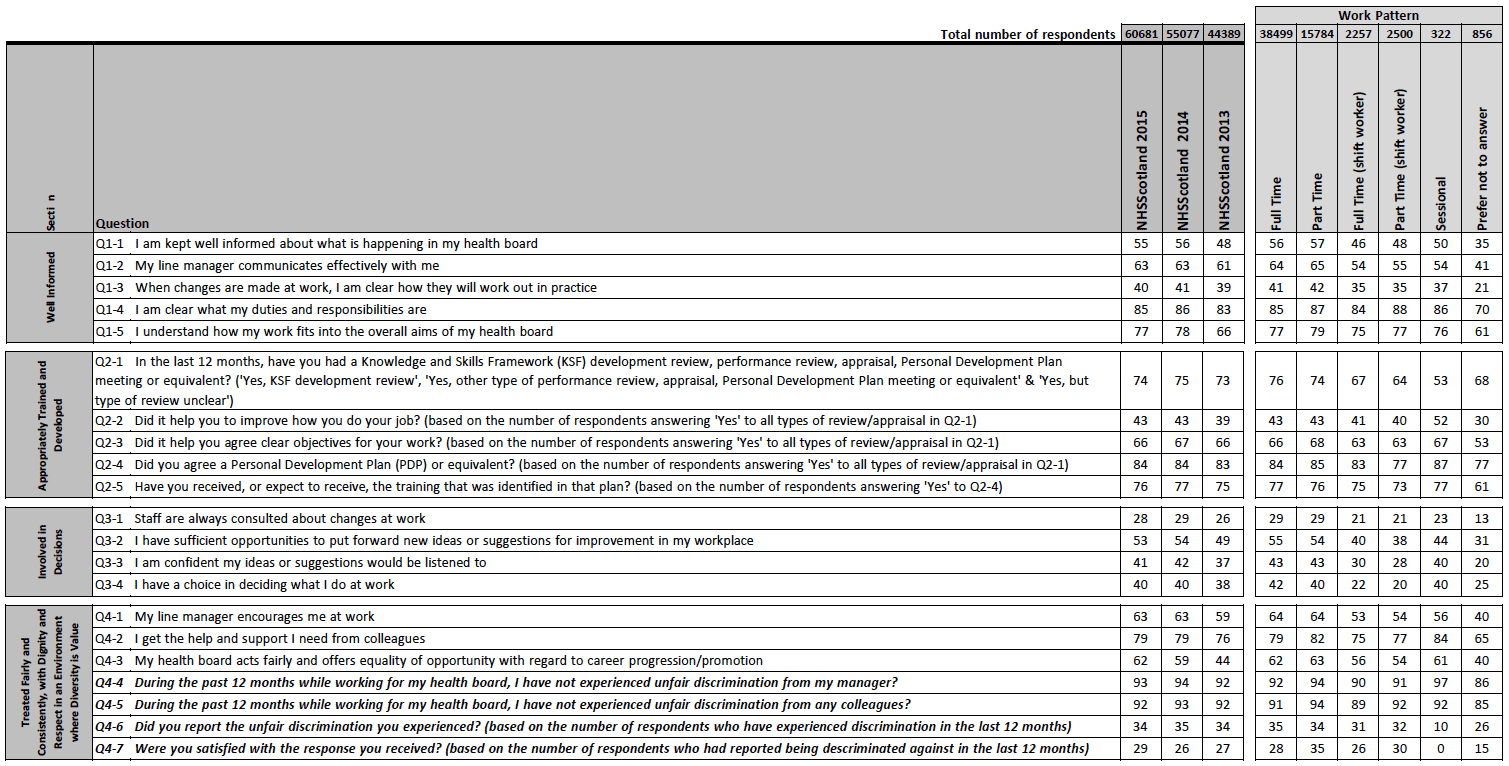
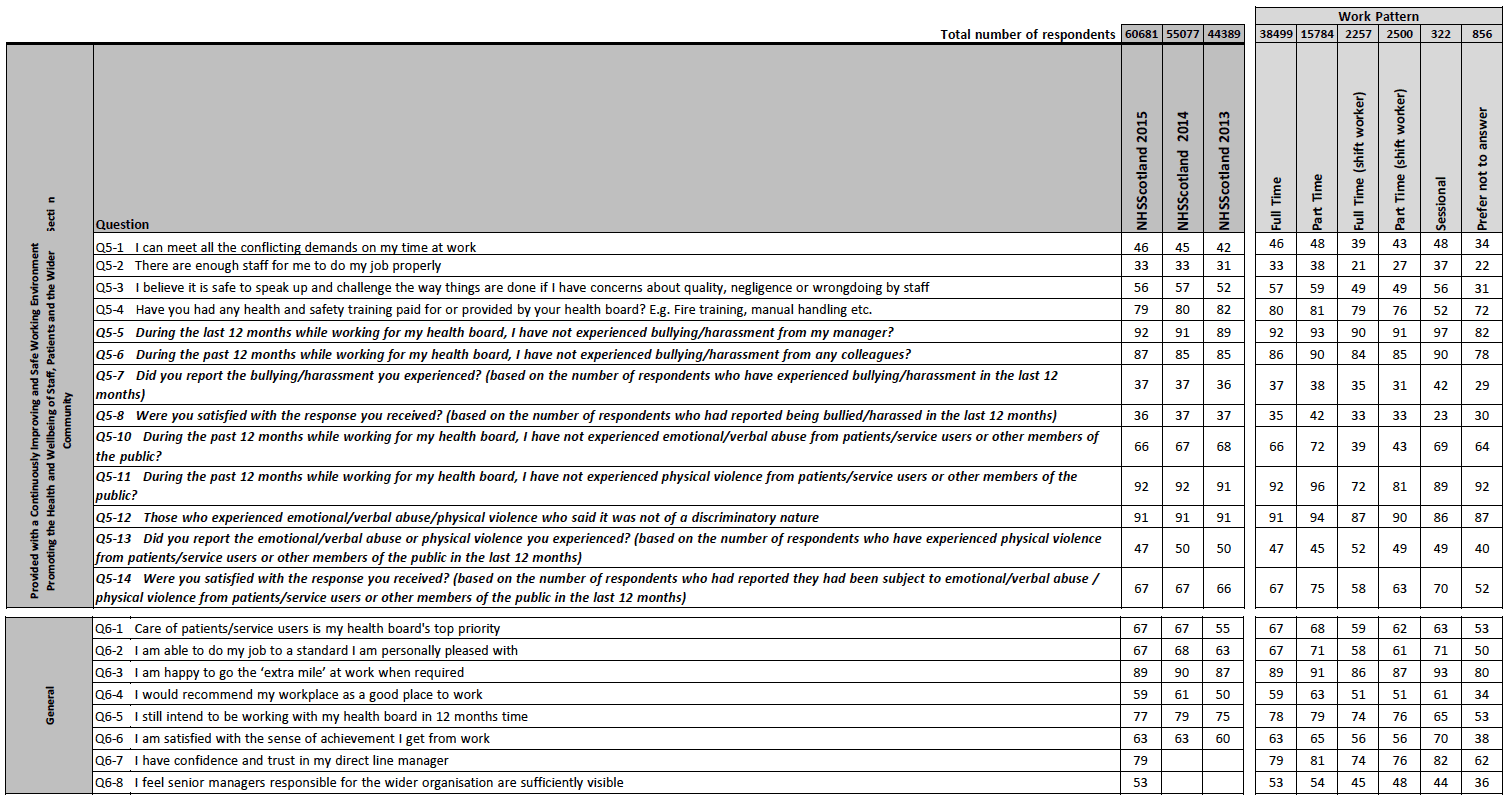
Appendix E ‐ Results by Employment and Socio‐Demographic Groups ‐ Length of Service
Table 2 ‐ Percentage of positive responses to questions relating to the overall experience of working for NHSScotland, by employment and socio‐demographic groups.
Note: Sub questions for Q4‐8 A to F, Q5‐9 A to F and Q5‐15 A to F are not reported here due to the complexity of presenting the multiple reasons for not reporting. Responses to negatively‐phrased questions have been treated in reverse to allow direct comparison with positively‐worded questions.
There may be variation up to 1% when compared to the Frequency Data due to rounding.
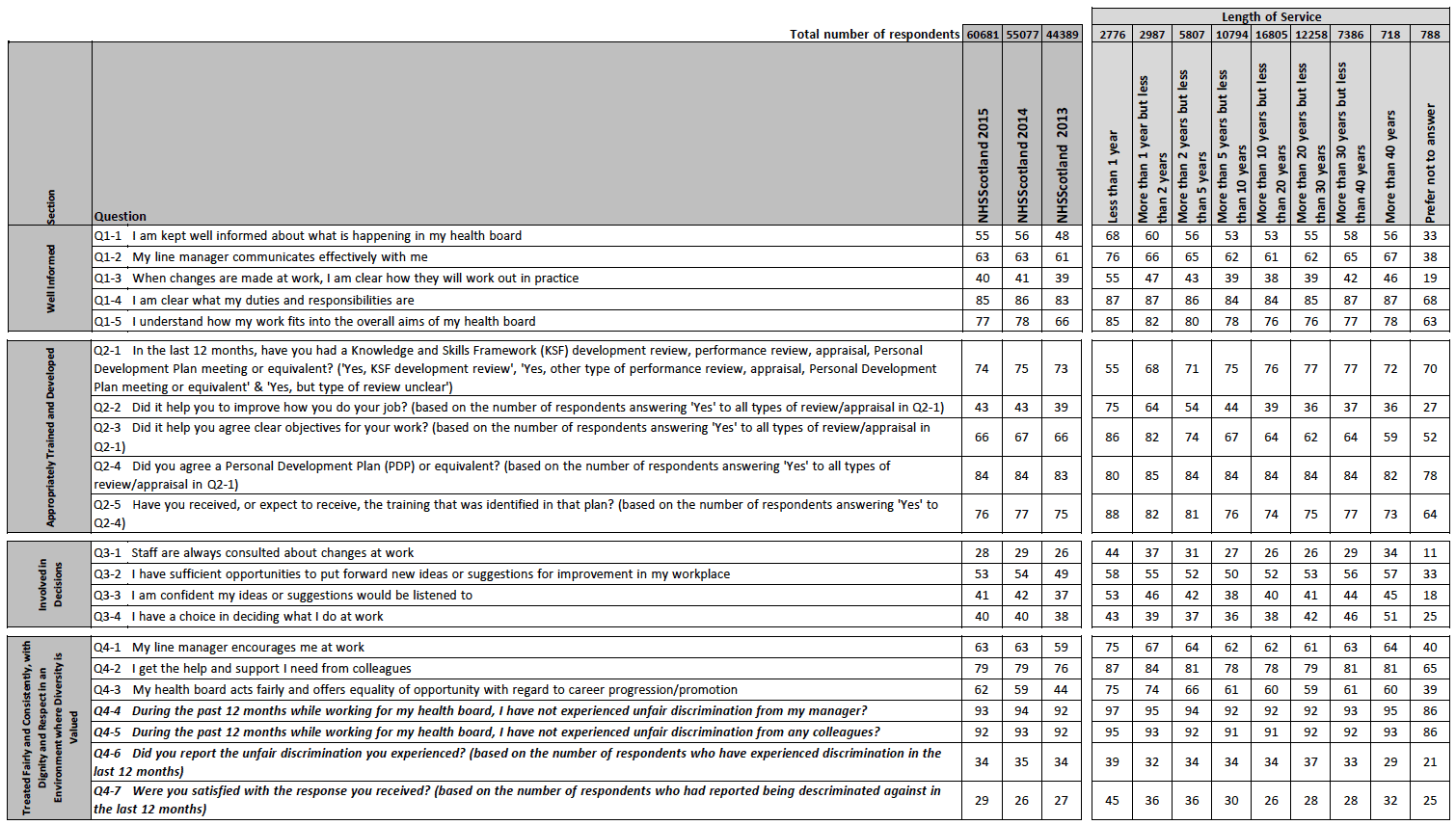
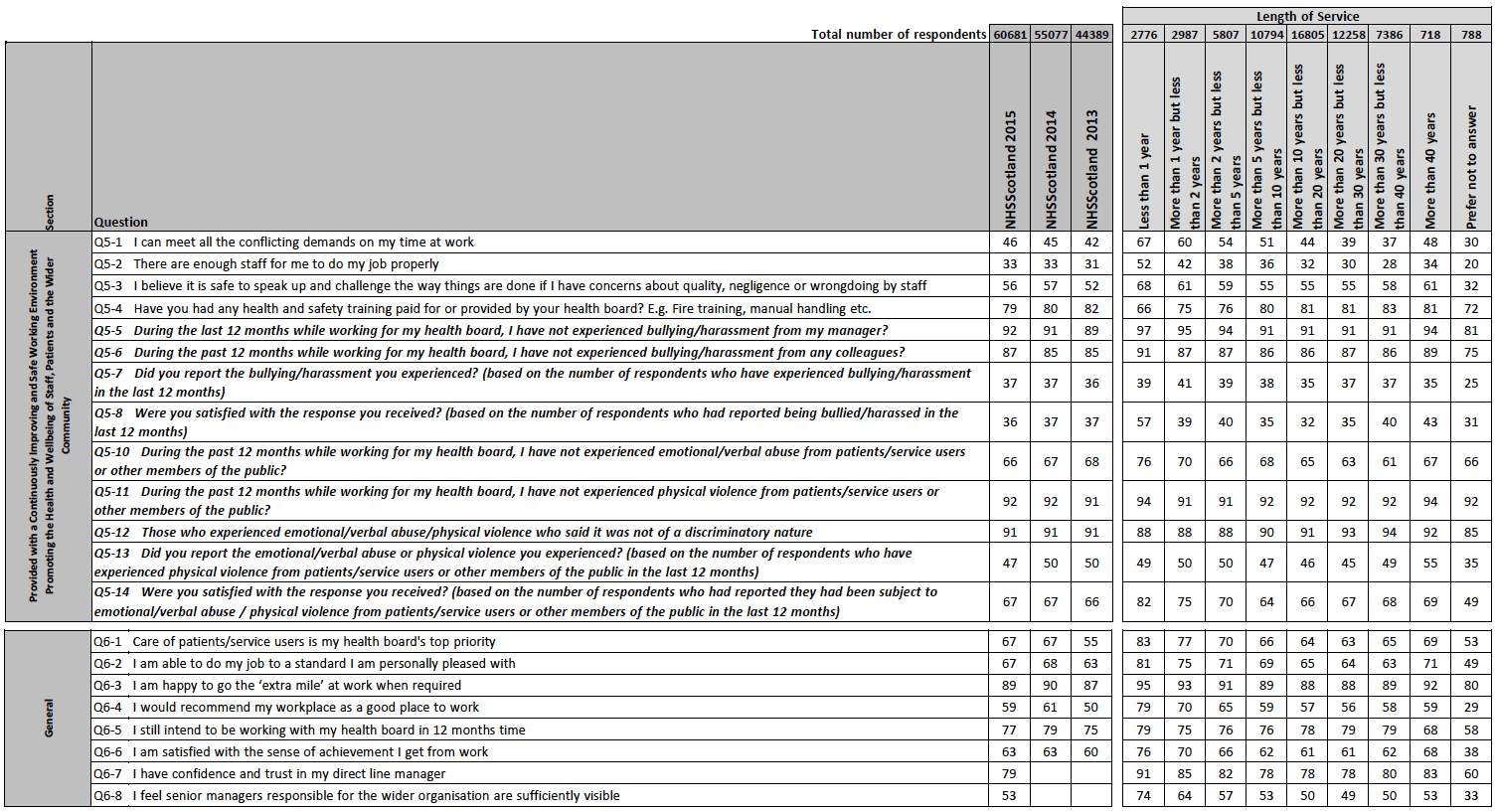
Appendix E ‐ Results by Employment and Socio‐Demographic Groups ‐ Gender
Table 3 ‐ Percentage of positive responses to questions relating to the overall experience of working for NHSScotland, by employment and socio‐demographic groups.
Note: Sub questions for Q4‐8 A to F, Q5‐9 A to F and Q5‐15 A to F are not reported here due to the complexity of presenting the multiple reasons for not reporting. Responses to negatively‐phrased questions have been treated in reverse to allow direct comparison with positively‐worded questions.
There may be variation up to 1% when compared to the Frequency Data due to rounding.
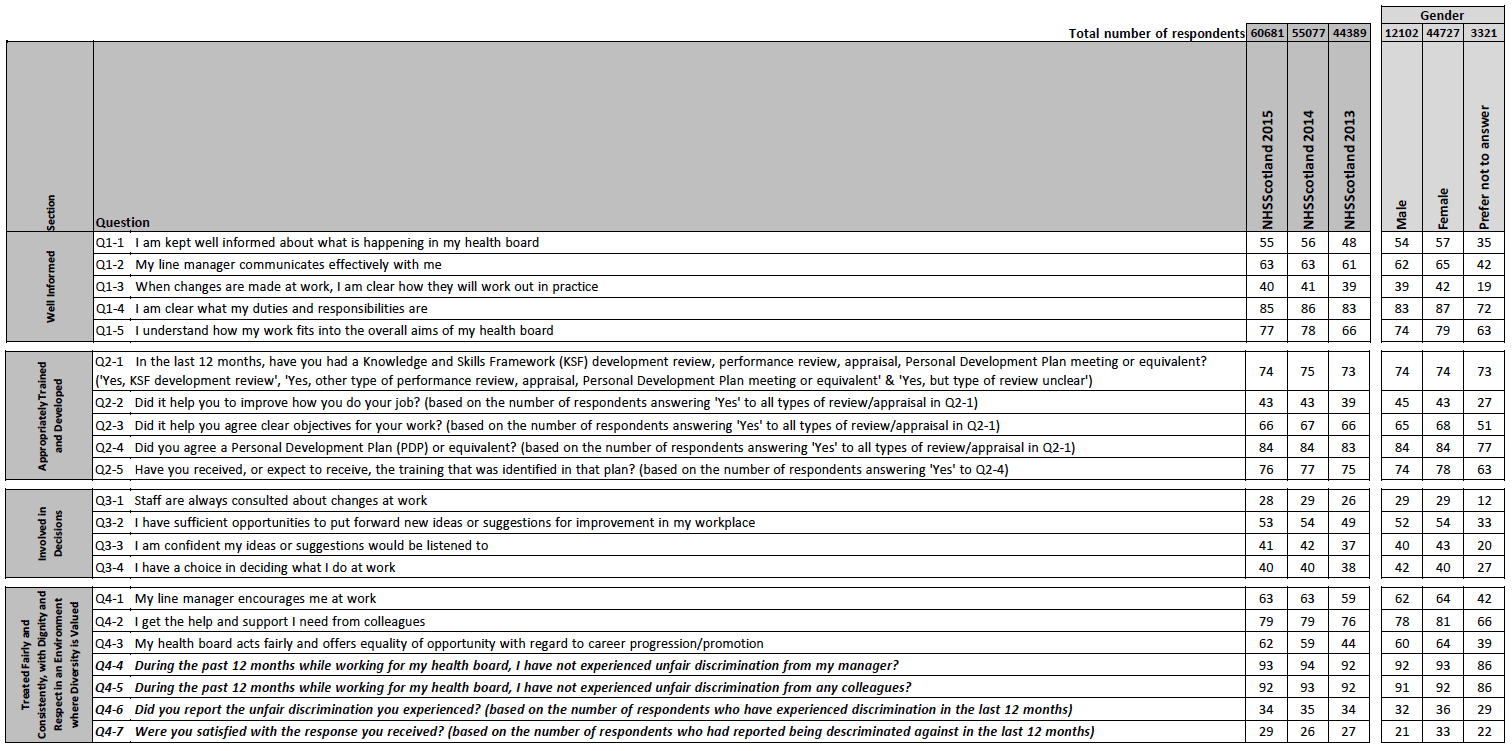
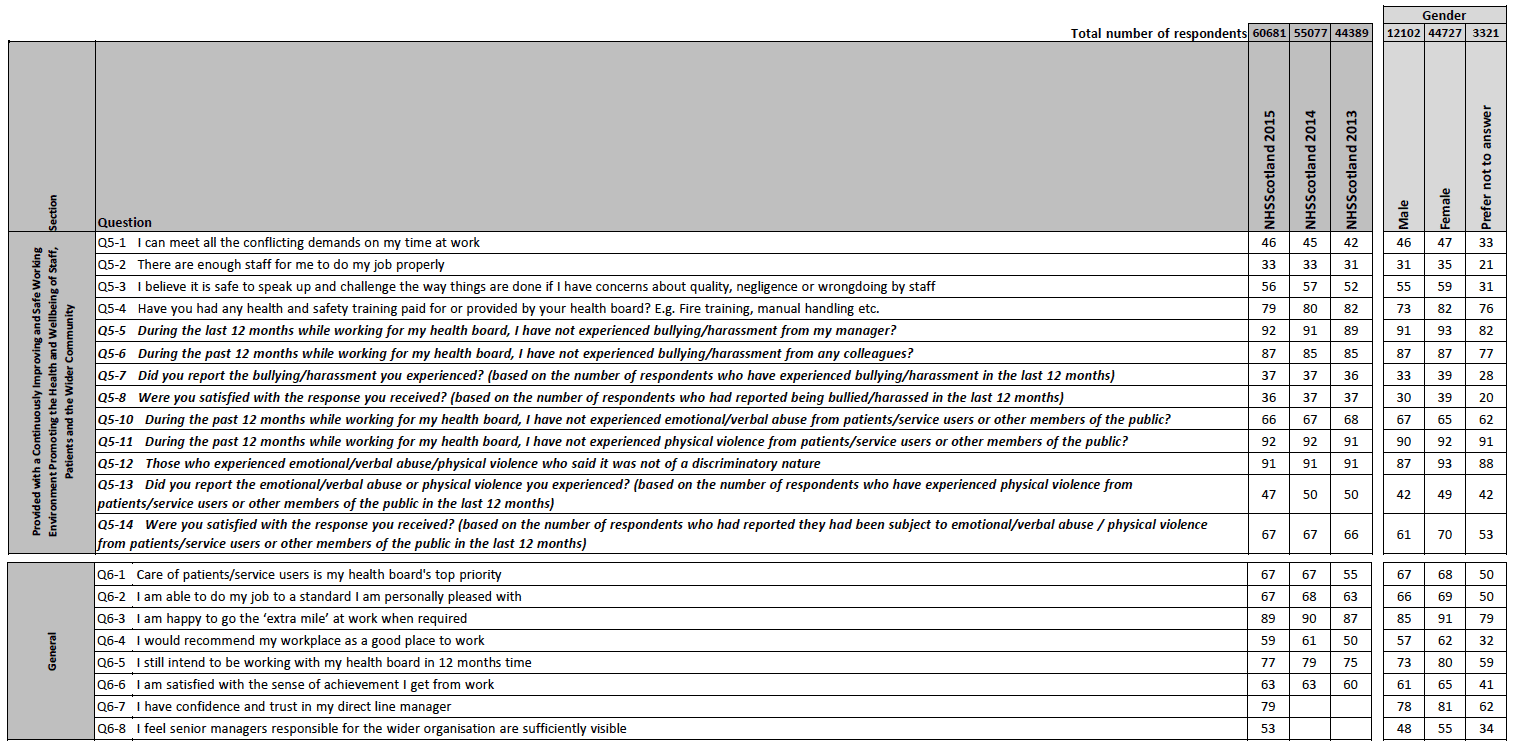
Appendix E ‐ Results by Employment and Socio‐Demographic Groups ‐ Age Group
Table 4 ‐ Percentage of positive responses to questions relating to the overall experience of working for NHSScotland, by employment and socio‐demographic groups.
Note: Sub questions for Q4‐8 A to F, Q5‐9 A to F and Q5‐15 A to F are not reported here due to the complexity of presenting the multiple reasons for not reporting. Responses to negatively‐phrased questions have been treated in reverse to allow direct comparison with positively‐worded questions.
There may be variation up to 1% when compared to the Frequency Data due to rounding.
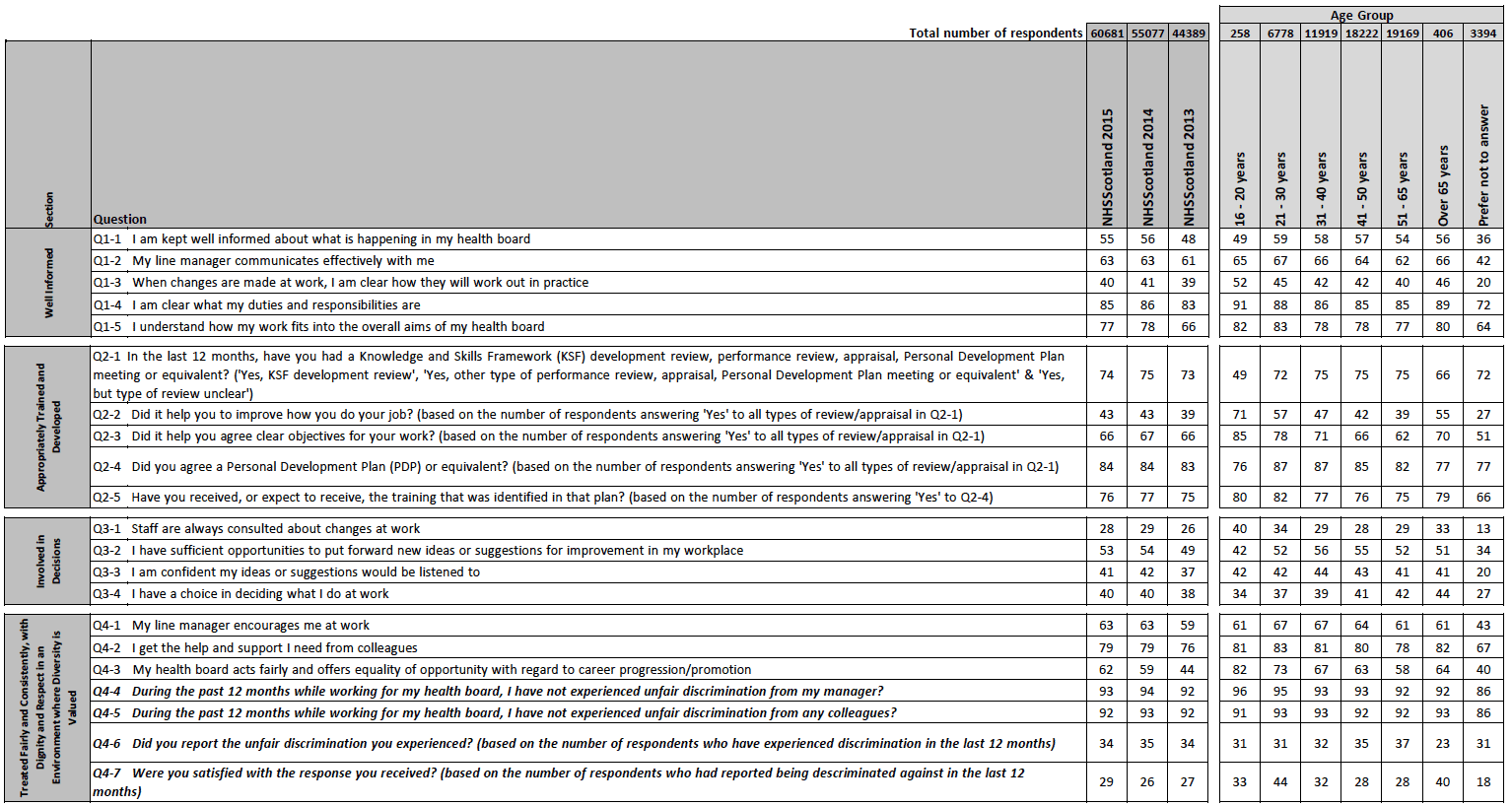
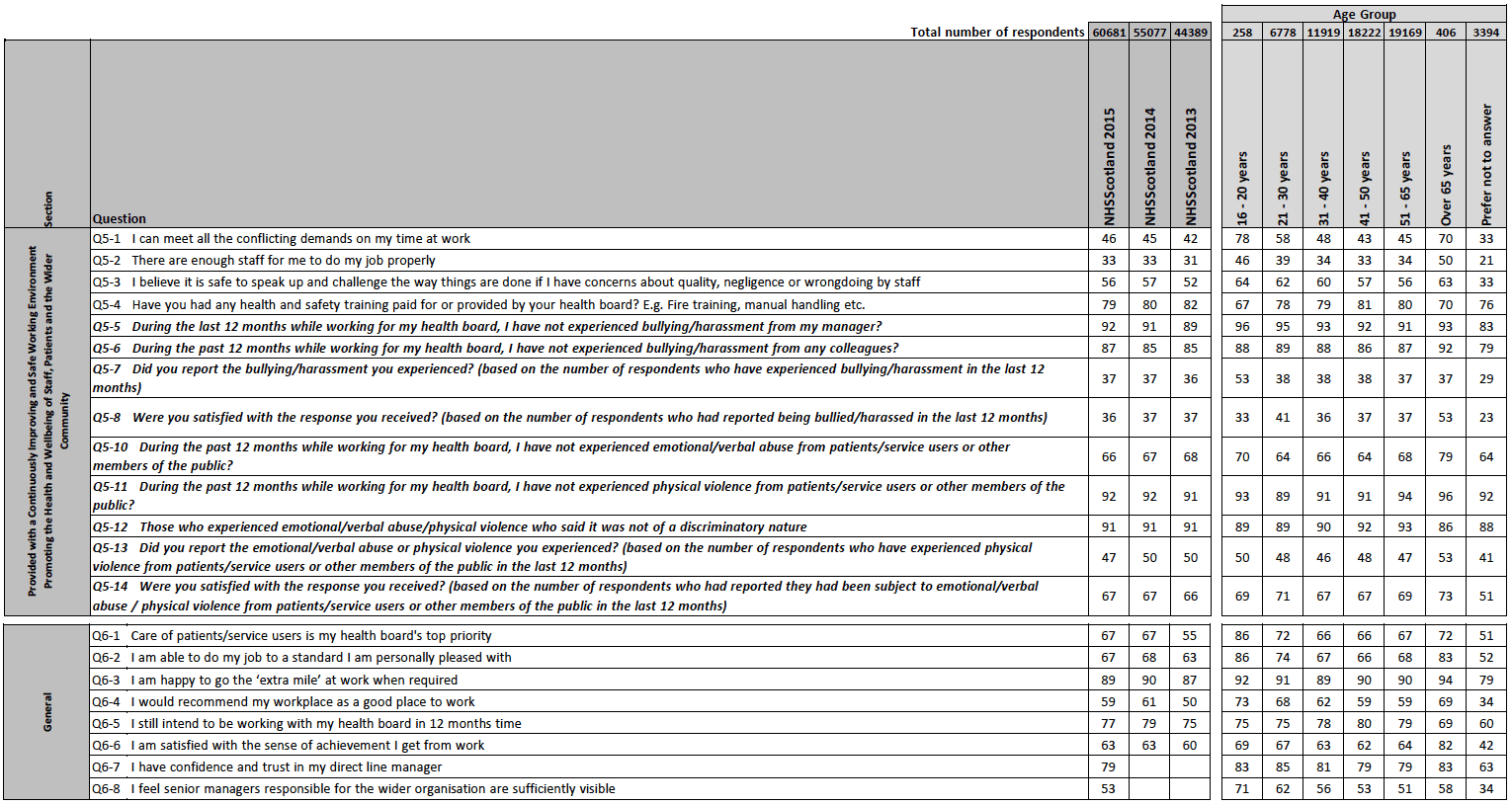
Appendix E ‐ Results by Employment and Socio‐Demographic Groups ‐ Sexuality
Table 5 ‐ Percentage of positive responses to questions relating to the overall experience of working for NHSScotland, by employment and socio‐demographic groups.
Note: Sub questions for Q4-8 A to F, Q5-9 A to F and Q5-15 A to F are not reported here due to the complexity of presenting the multiple reasons for not reporting. Responses to negatively-phrased questions have been treated in reverse to allow direct comparison with positively-worded questions.
There may be variation up to 1% when compared to the Frequency Data due to rounding.
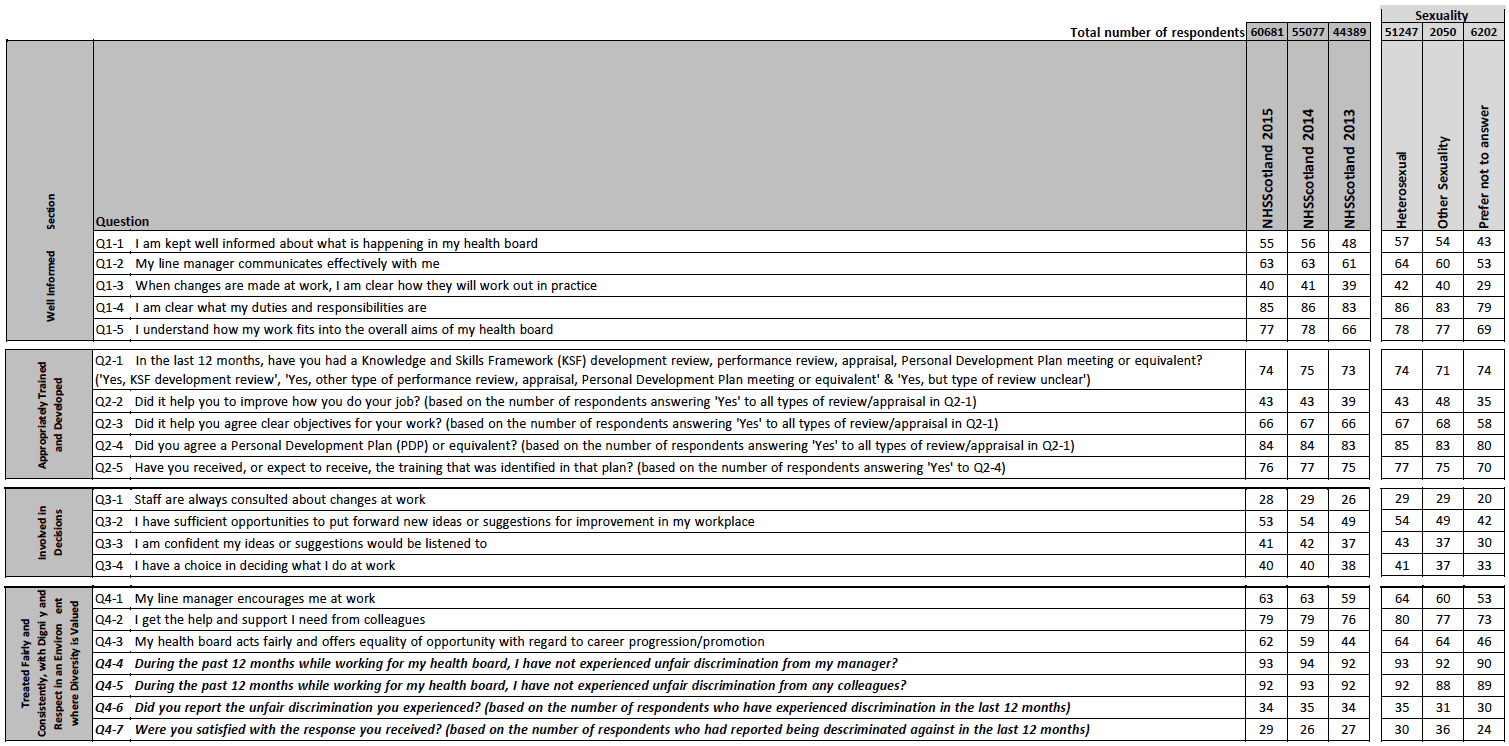

Appendix E ‐ Results by Employment and Socio‐Demographic Groups ‐ Religious Beliefs
Table 6 ‐ Percentage of positive responses to questions relating to the overall experience of working for NHSScotland, by employment and socio‐demographic groups.
Note: Sub questions for Q4‐8 A to F, Q5‐9 A to F and Q5‐15 A to F are not reported here due to the complexity of presenting the multiple reasons for not reporting. Responses to negatively‐phrased questions have been treated in reverse to allow direct comparison with positively‐worded questions.
There may be variation up to 1% when compared to the Frequency Data due to rounding.
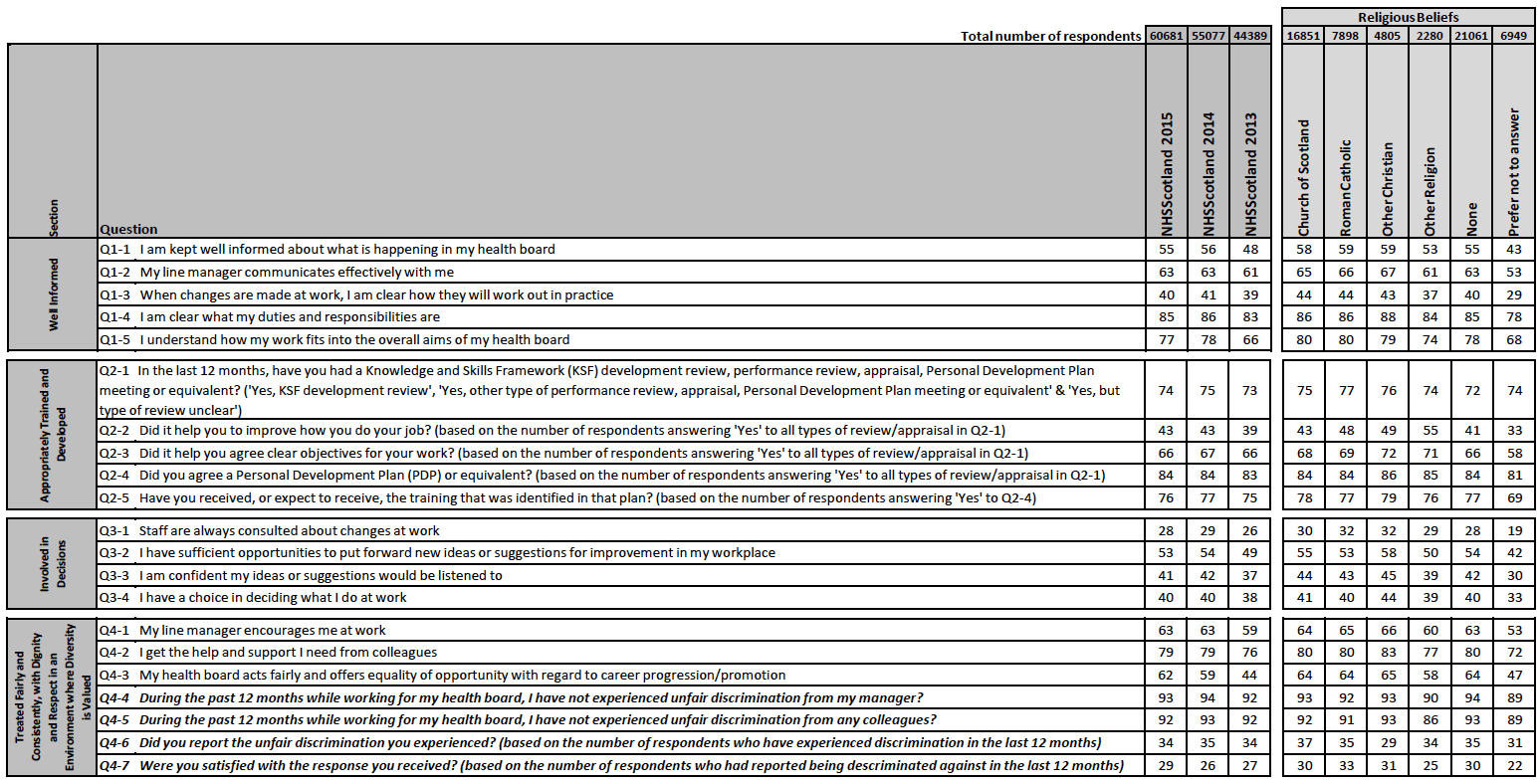
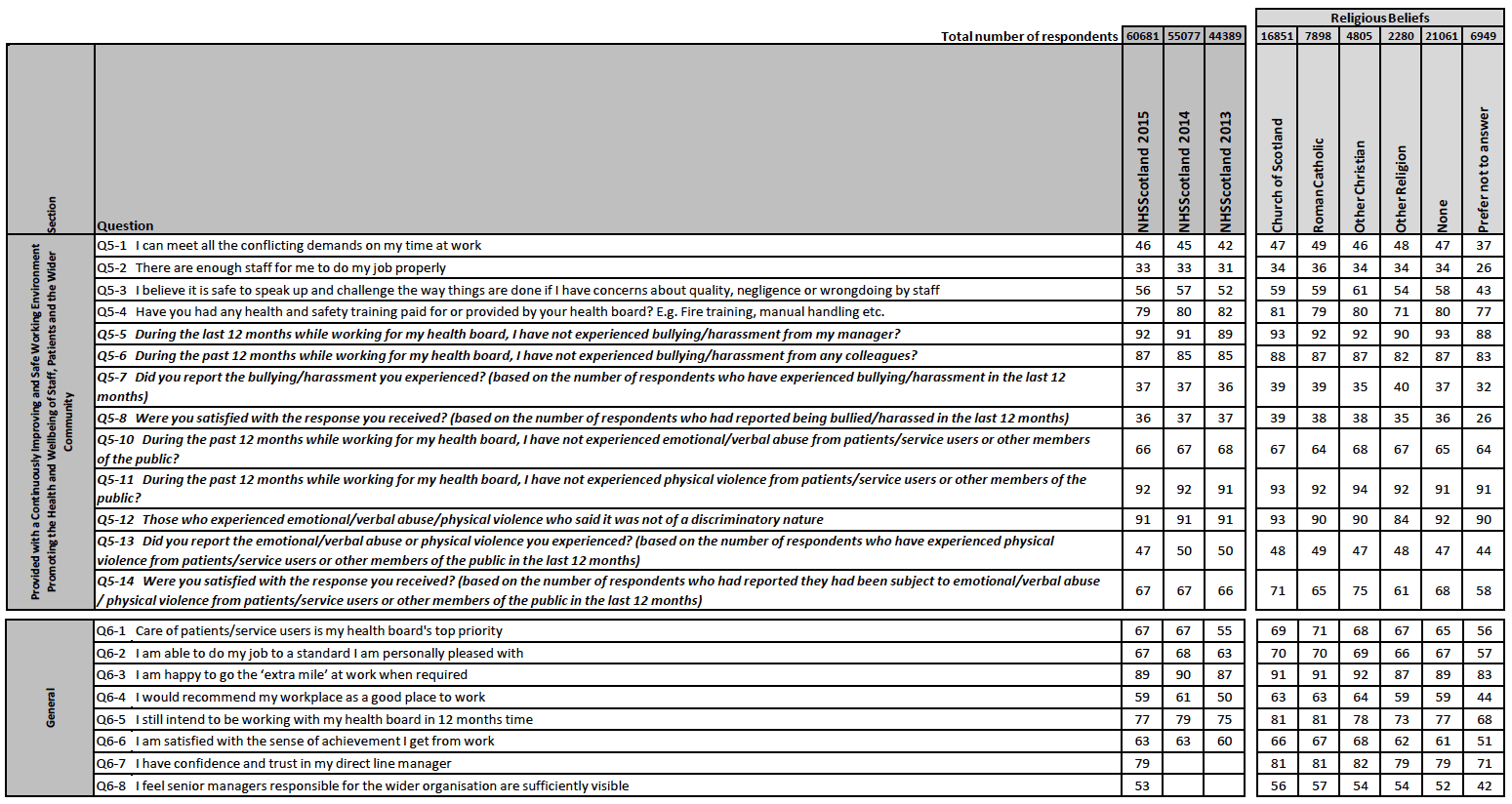
Appendix E ‐ Results by Employment and Socio‐Demographic Groups ‐ Ethnicity
Table 7 ‐ Percentage of positive responses to questions relating to the overall experience of working for NHSScotland, by employment and socio‐demographic groups.
Note: Sub questions for Q4-8 A to F, Q5-9 A to F and Q5-15 A to F are not reported here due to the complexity of presenting the multiple reasons for not reporting. Responses to negatively-phrased questions have been treated in reverse to allow direct comparison with positively-worded questions.
There may be variation up to 1% when compared to the Frequency Data due to rounding.
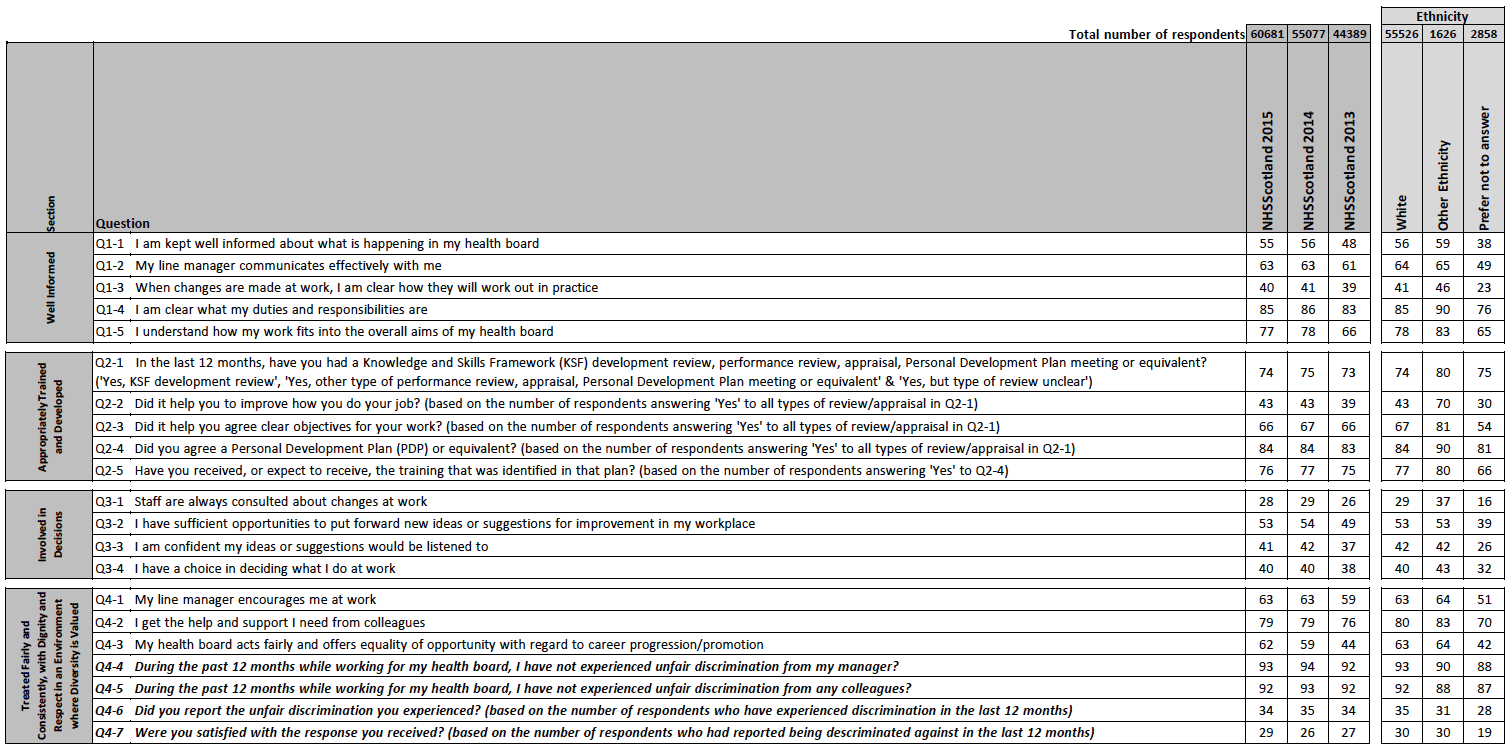
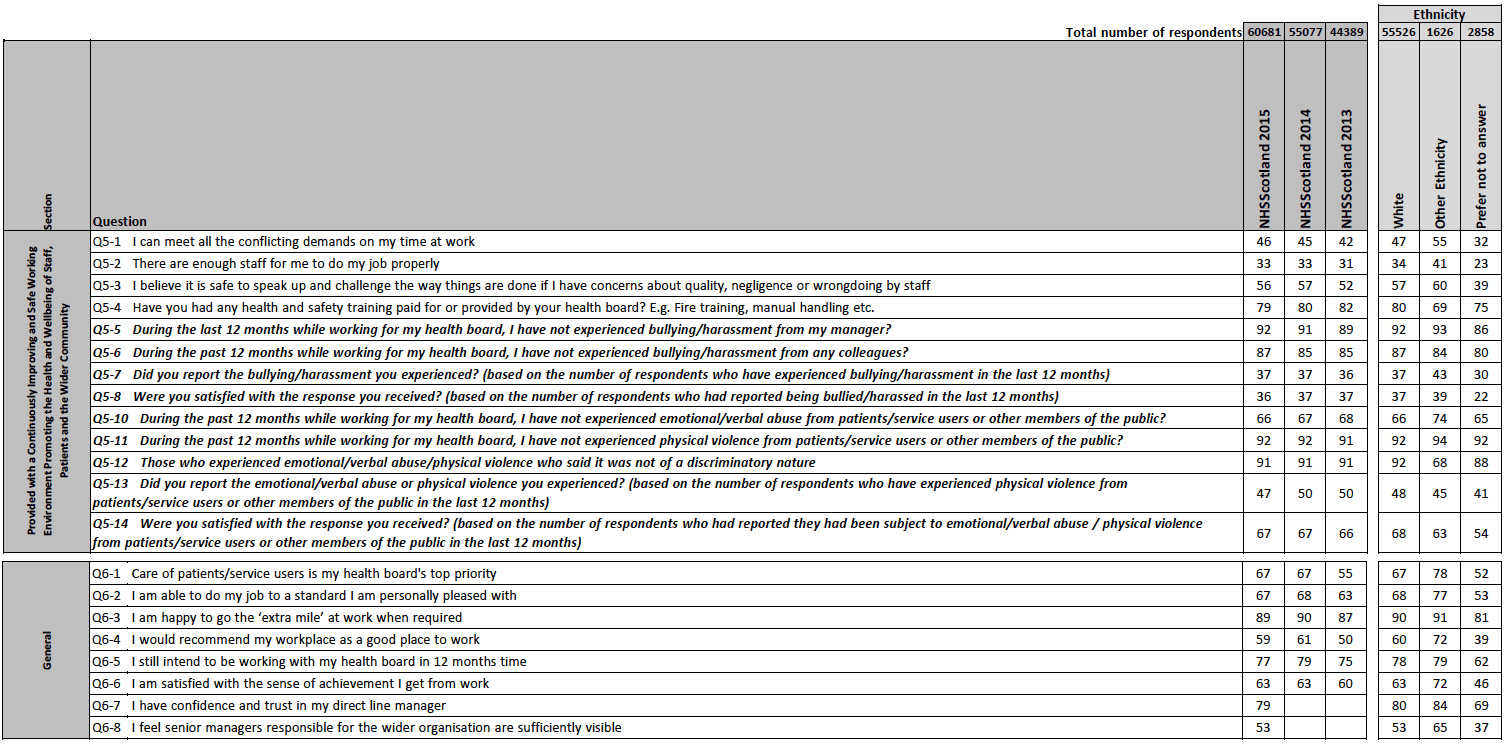
Appendix E ‐ Results by Employment and Socio‐Demographic Groups ‐ Disability
Table 8 ‐ Percentage of positive responses to questions relating to the overall experience of working for NHSScotland, by employment and socio‐demographic groups.
Note: Sub questions for Q4‐8 A to F, Q5‐9 A to F and Q5‐15 A to F are not reported here due to the complexity of presenting the multiple reasons for not reporting. Responses to negatively‐phrased questions have been treated in reverse to allow direct comparison with positively‐worded questions.
There may be variation up to 1% when compared to the Frequency Data due to rounding.
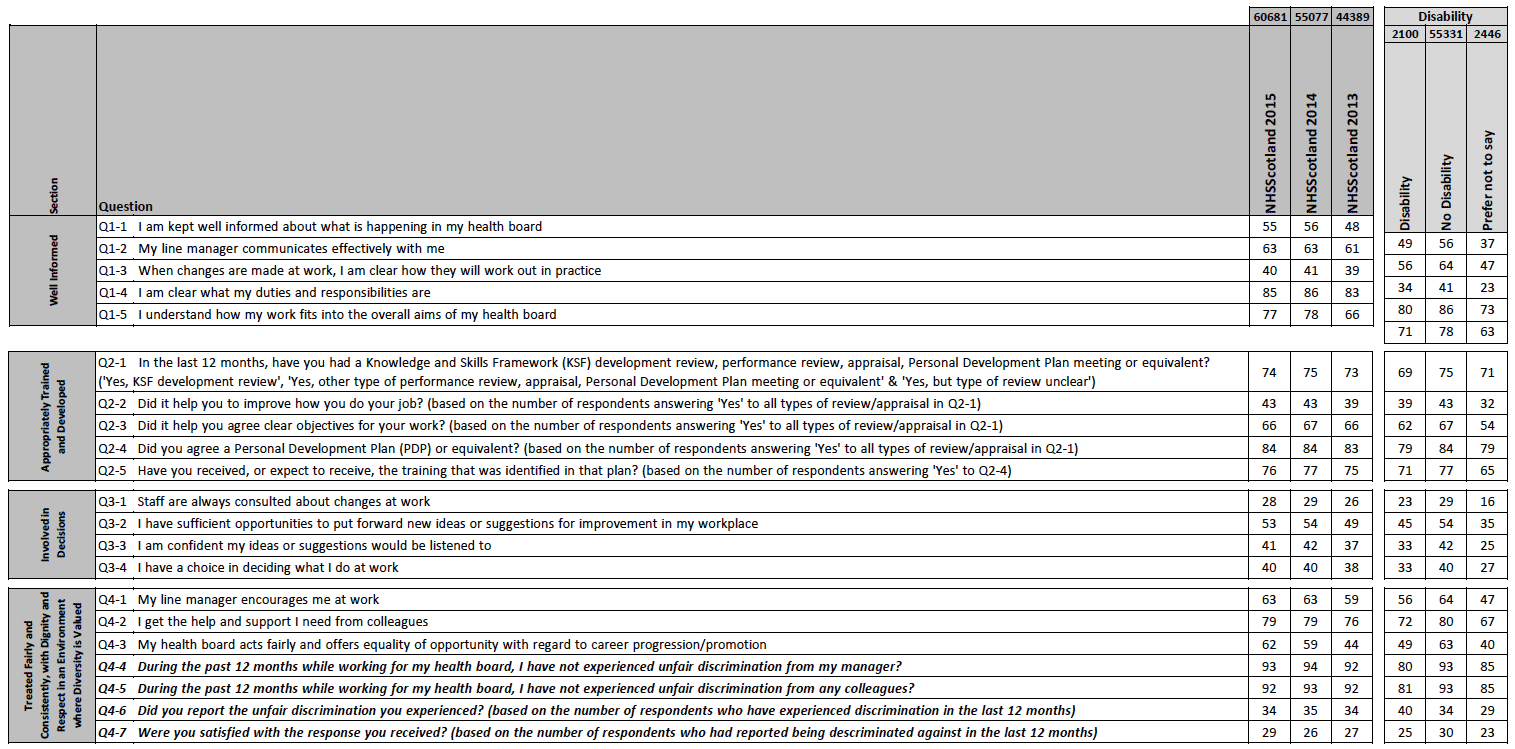
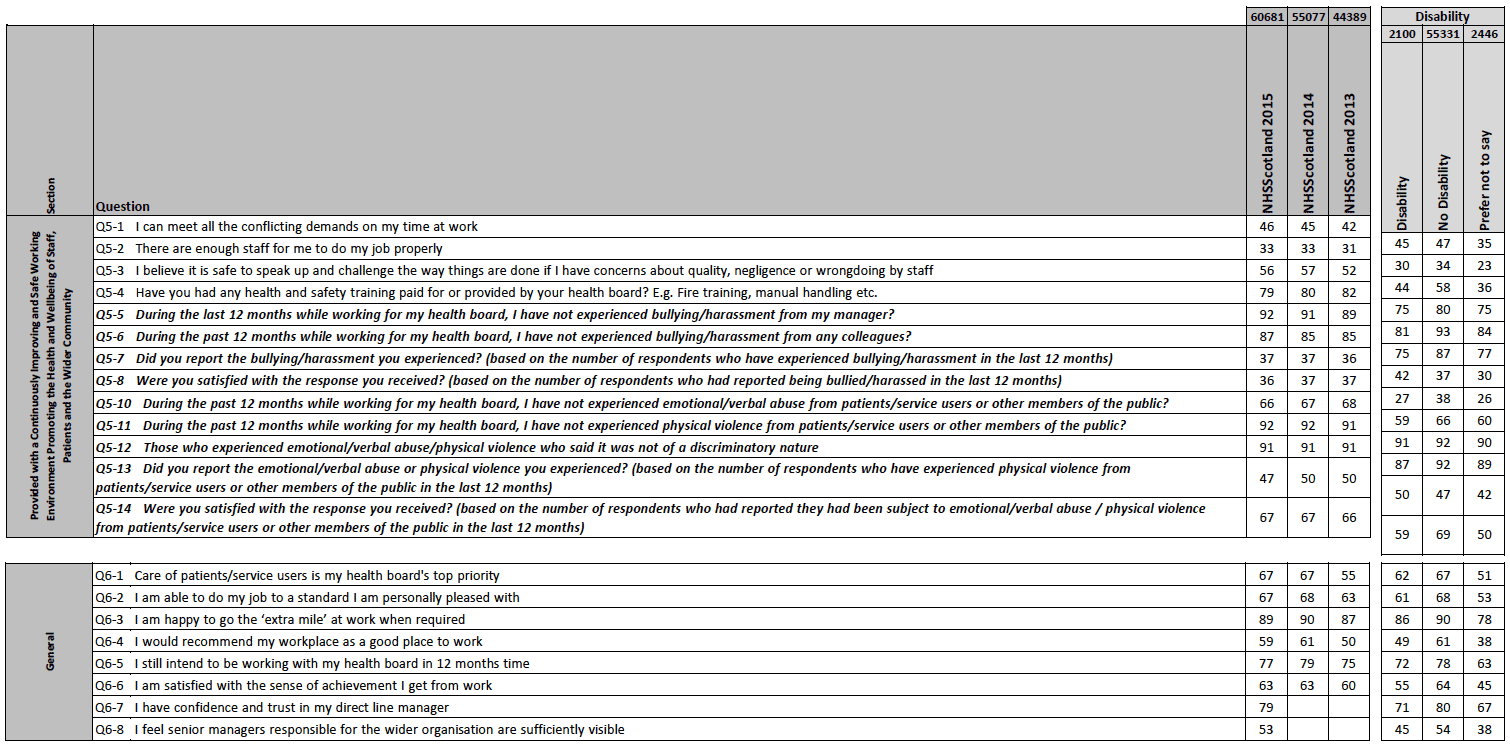
Appendix E ‐ Results by Employment and Socio‐Demographic Groups ‐ Gender Reassignment
Table 9 ‐ Percentage of positive responses to questions relating to the overall experience of working for NHSScotland, by employment and socio‐demographic groups.
Note: Sub questions for Q4‐8 A to F, Q5‐9 A to F and Q5‐15 A to F are not reported here due to the complexity of presenting the multiple reasons for not reporting. Responses to negatively‐phrased questions have been treated in reverse to allow direct comparison with positively‐worded questions.
There may be variation up to 1% when compared to the Frequency Data due to rounding.
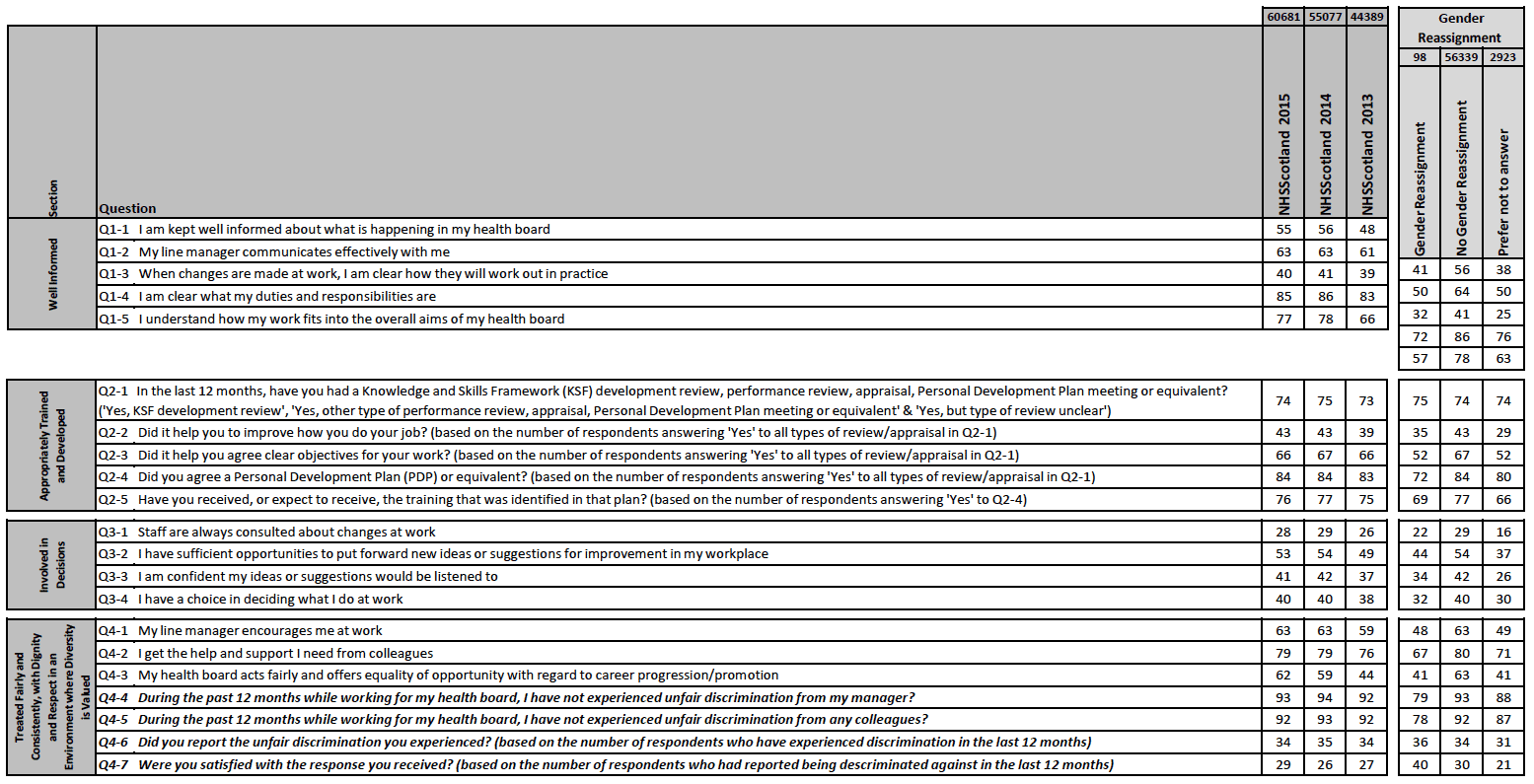
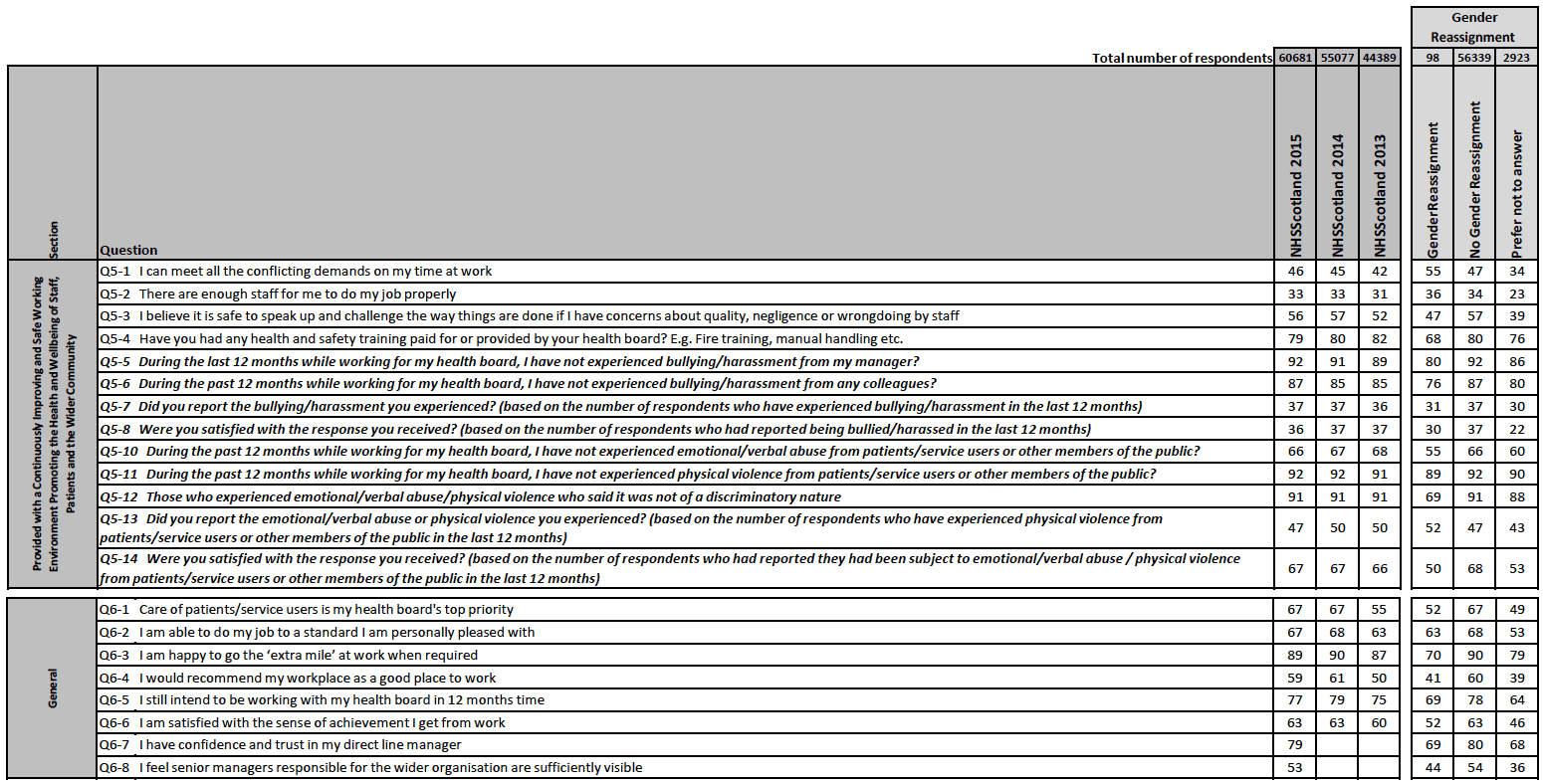
Appendix E ‐ Results by Employment and Socio‐Demographic Groups ‐ Caring Responsibilities
Table 10 - Percentage of positive responses to questions relating to the overall experience of working for NHSScotland, by employment and socio-demographic groups.
Note: Sub questions for Q4-8 A to F, Q5-9 A to F and Q5-15 A to F are not reported here due to the complexity of presenting the multiple reasons for not reporting.
Responses to negatively-phrased questions have been treated in reverse to allow direct comparison with positively-worded questions.
There may be variation up to 1% when compared to the Frequency Data due to rounding.
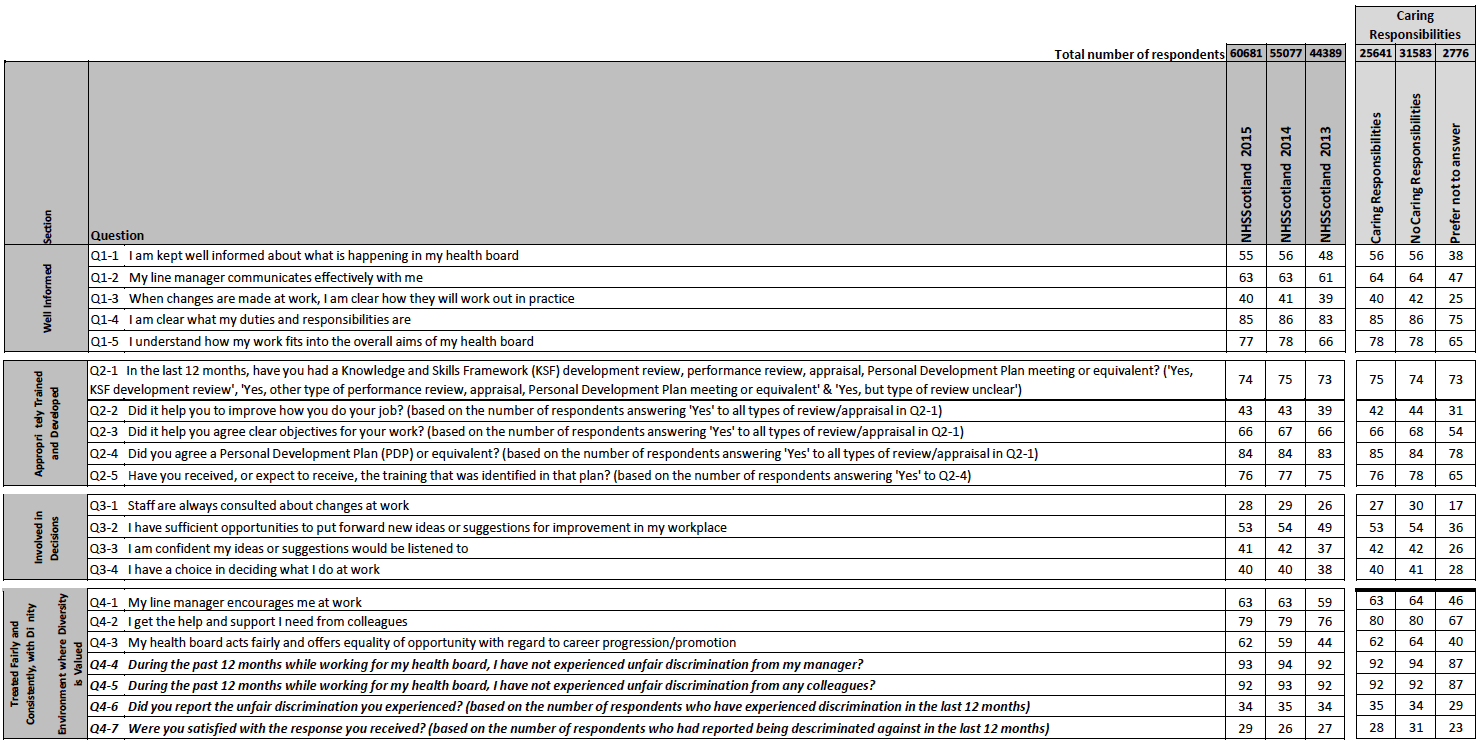
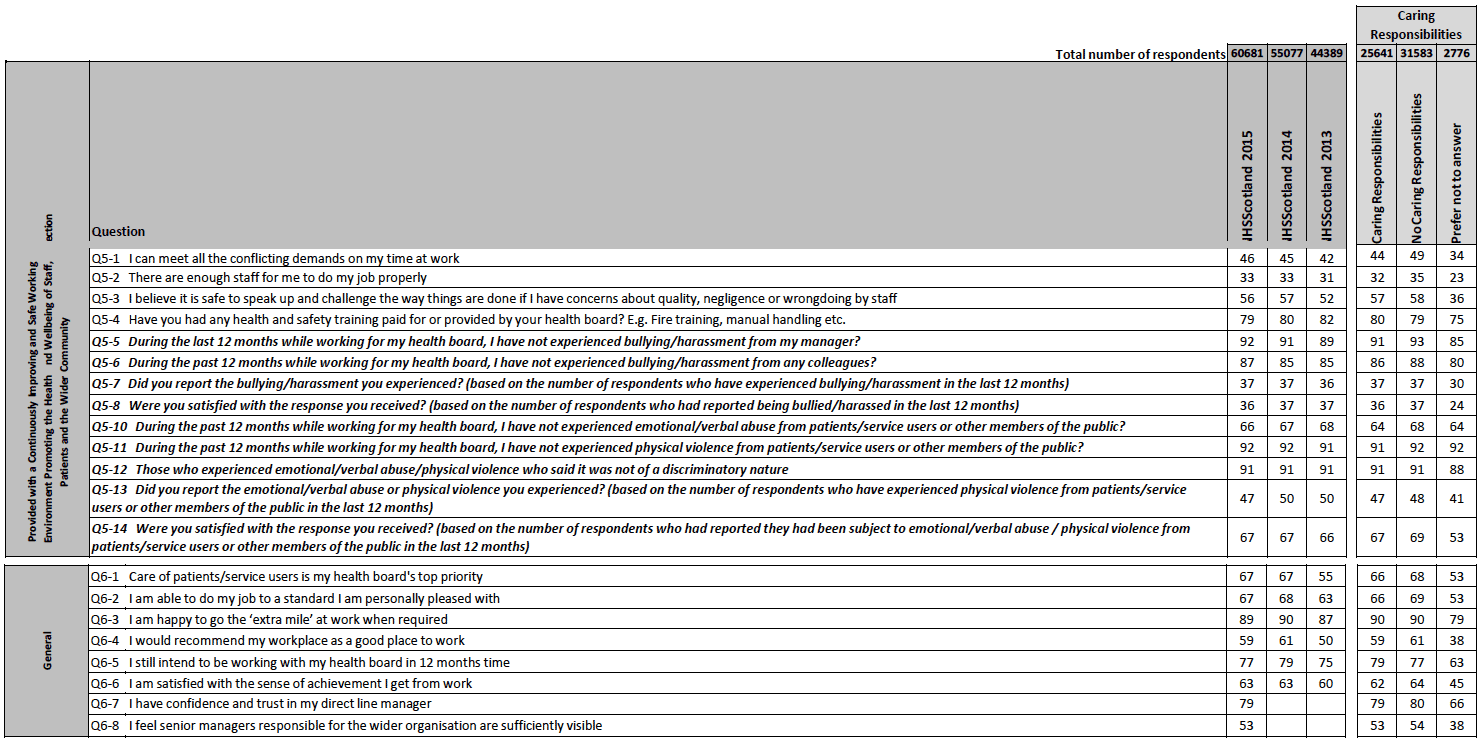
Contact
Email: Malcolm Summers
There is a problem
Thanks for your feedback